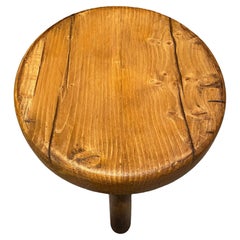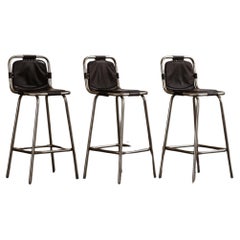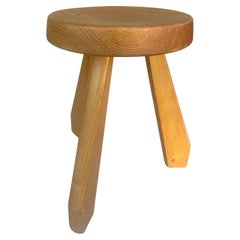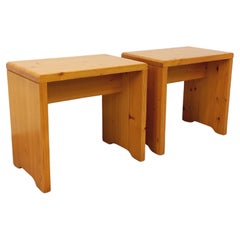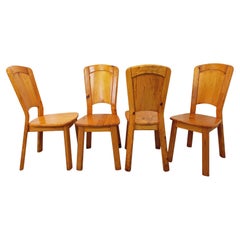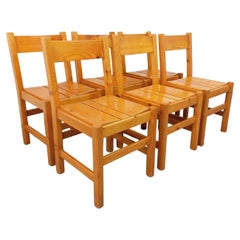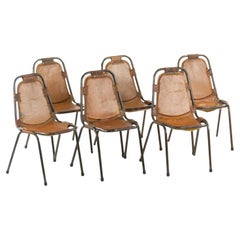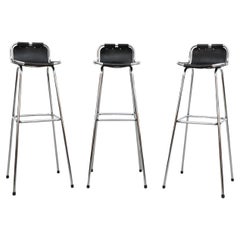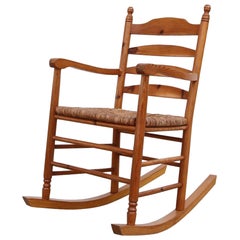Charlotte Perriand Les Arcs
Vintage 1960s French Stools
Wood, Mahogany
Vintage 1960s Italian Mid-Century Modern Stools
Iron
Vintage 1960s French Stools
Wood, Mahogany
Vintage 1970s French Mid-Century Modern Stools
Pine
Vintage 1970s French Mid-Century Modern Chairs
Wood
Vintage 1970s French Mid-Century Modern Chairs
Pine
Vintage 1960s Italian Modern Dining Room Chairs
Metal
Vintage 1960s French Mid-Century Modern Stools
Chrome
Mid-20th Century Danish Mid-Century Modern Rocking Chairs
Rush, Pine
Vintage 1960s French Mid-Century Modern Benches
Pine
Vintage 1960s French Mid-Century Modern Stools
Wood
Mid-20th Century French Mid-Century Modern Chairs
Metal
Mid-20th Century French Mid-Century Modern Chairs
Metal
Vintage 1960s French Chairs
Chrome
Vintage 1970s Benches
Wood
Vintage 1950s French Stools
Pine
2010s French Stools
Pine
Vintage 1960s French Stools
Pine
Late 20th Century Post-Modern Stools
Pine
Vintage 1950s French Stools
Pine
Vintage 1960s French Stools
Wood, Pine
1990s French Mid-Century Modern Dining Room Chairs
Metal
Vintage 1960s Stools
Wood, Pine
Vintage 1970s French Benches
Pine
Vintage 1970s French Benches
Pine
Vintage 1970s French Benches
Pine
Vintage 1960s French Mid-Century Modern Stools
Pine
Mid-20th Century French Stools
Pine
Vintage 1960s French Mid-Century Modern Stools
Pine
Vintage 1960s French Mid-Century Modern Stools
Pine
Vintage 1960s French Mid-Century Modern Stools
Pine
Vintage 1960s French Mid-Century Modern Stools
Pine
Vintage 1950s French Mid-Century Modern Chairs
Wood
Mid-20th Century Mid-Century Modern Chairs
Metal
Late 20th Century French Mid-Century Modern Stools
Pine
Vintage 1960s French Mid-Century Modern Dining Room Chairs
Pine
Vintage 1960s French Mid-Century Modern Footstools
Metal
Mid-20th Century French Mid-Century Modern Benches
Pine
Late 20th Century French Mid-Century Modern Stools
Pine
Vintage 1970s French Benches
Pine
Vintage 1970s French Benches
Pine
Mid-20th Century French Mid-Century Modern Chairs
Pine
Mid-20th Century French Mid-Century Modern Chairs
Pine
Vintage 1950s French Mid-Century Modern Chairs
Oak
Vintage 1970s French Mid-Century Modern Daybeds
Wood, Pine
Vintage 1960s French Mid-Century Modern Chairs
Metal
Vintage 1980s French Mid-Century Modern Benches
Pine
Vintage 1960s European Other Chairs
Metal
Vintage 1960s French Mid-Century Modern Stools
Chrome
Mid-20th Century French Mid-Century Modern Stools
Pine
Mid-20th Century French Mid-Century Modern Stools
Pine
Vintage 1970s French Mid-Century Modern Benches
Pine
Mid-20th Century French Stools
Pine
Vintage 1970s French Mid-Century Modern Benches
Pine
Mid-20th Century French Stools
Pine
Vintage 1960s French Mid-Century Modern Stools
Pine
Vintage 1960s French Benches
Pine
Vintage 1960s French Dining Room Chairs
Pine
- 1
- ...
Vintage Charlotte Perriand Les Arcs Chairs, Stools, Lighting and Other Furniture for Sale
Although Charlotte Perriand is best known for the steel tubular furniture she made with Le Corbusier and Pierre Jeanneret in the late 1920s, the iconic French designer preferred working with wood. She designed chairs, stools, wall lamps and other items in the 1960s as part of a suite of furniture for Les Arcs, a ski resort in the French Alps known, in part, for being Perriand’s last major architectural project.
Perriand’s Les Arcs furniture demonstrates how modernist figures like her brought good design to the masses. The pine wood used for the property's seating and tables, which came from the region (Savoie), was affordable, and the designs were sturdy and reproducible on a large scale, as well as beautiful.
Perriand didn’t just design furniture at Les Arcs, she created a concept. As the lead architect, she situated the mass housing to minimally disrupt the natural landscape, and the units were designed with open plans so that women wouldn’t be alone in the kitchen, cut off from social interactions. She outfitted her lodges with stylish furniture designs in pine and tan leather, and her then-radical living concept quickly became the Alpine norm. Today, Perriand's furnishings for Les Arcs are hard to come by.
“Perriand’s furniture has become increasingly rare, as her pieces are highly collectible and sought after,” says 1stDibs seller Adrian Agudo, of 20th-century design specialists DADA. “Her work from the Les Arcs project, in particular, appears on the market infrequently.”
Find vintage Charlotte Perriand Les Arcs furniture for sale on 1stDibs.
Finding the Right Seating for You
With entire areas of our homes reserved for “sitting rooms,” the value of quality antique and vintage seating cannot be overstated.
Fortunately, the design of side chairs, armchairs and other lounge furniture — since what were, quite literally, the early perches of our ancestors — has evolved considerably.
Among the earliest standard seating furniture were stools. Egyptian stools, for example, designed for one person with no seat back, were x-shaped and typically folded to be tucked away. These rudimentary chairs informed the design of Greek and Roman stools, all of which were a long way from Sori Yanagi's Butterfly stool or Alvar Aalto's Stool 60. In the 18th century and earlier, seats with backs and armrests were largely reserved for high nobility.
The seating of today is more inclusive but the style and placement of chairs can still make a statement. Antique desk chairs and armchairs designed in the style of Louis XV, which eventually included painted furniture and were often made of rare woods, feature prominently curved legs as well as Chinese themes and varied ornaments. Much like the thrones of fairy tales and the regency, elegant lounges crafted in the Louis XV style convey wealth and prestige. In the kitchen, the dining chair placed at the head of the table is typically reserved for the head of the household or a revered guest.
Of course, with luxurious vintage or antique furnishings, every chair can seem like the best seat in the house. Whether your preference is stretching out on a plush sofa, such as the Serpentine, designed by Vladimir Kagan, or cozying up in a vintage wingback chair, there is likely to be a comfy classic or contemporary gem for you on 1stDibs.
With respect to the latest obsessions in design, cane seating has been cropping up everywhere, from sleek armchairs to lounge chairs, while bouclé fabric, a staple of modern furniture design, can be seen in mid-century modern, Scandinavian modern and Hollywood Regency furniture styles.
Admirers of the sophisticated craftsmanship and dark woods frequently associated with mid-century modern seating can find timeless furnishings in our expansive collection of lounge chairs, dining chairs and other items — whether they’re vintage editions or alluring official reproductions of iconic designs from the likes of Hans Wegner or from Charles and Ray Eames. Shop our inventory of Egg chairs, designed in 1958 by Arne Jacobsen, the Florence Knoll lounge chair and more.
No matter your style, the collection of unique chairs, sofas and other seating on 1stDibs is surely worthy of a standing ovation.
Read More
The 21 Most Popular Mid-Century Modern Chairs
You know the designs, now get the stories about how they came to be.
Mies van der Rohe’s Barcelona Chair Shook Modernism and Charmed Hollywood
The enduring appeal of the Barcelona chair is in the details.
Herman Miller Got Its Start in the Office, but Its Legacy Is in the Home
The brand that turned Charles and Ray Eames, Isamu Noguchi and George Nelson into mid-century household names is just as relevant today as it was six decades ago.
May’s Most Popular Interiors on Instagram
Our feed is filled with the world's most beautiful spaces. See the rooms our followers have deemed the best of the best this month.
April’s Most-Liked Interiors on Instagram
Our feed is filled with the world's most beautiful spaces. See the 10 our followers have deemed the best of the best this month.
See How New York City Designers Experiment on Their Own Homes
There are many lessons to be learned from the lofts, apartments and townhouses of architects and decorators in Manhattan and beyond.
Jeff Andrews Captures Old Hollywood Glamour in His Cinematic Spaces
Having created extravagant homes for reality TV’s biggest stars, the designer is stepping into the spotlight with his first book.
New Orleans’ Lee Ledbetter Makes Design Magic by Mixing Past and Present
The Louisiana-born and -bred architect talks to 1stdibs about the art of making timeless places that matter.
